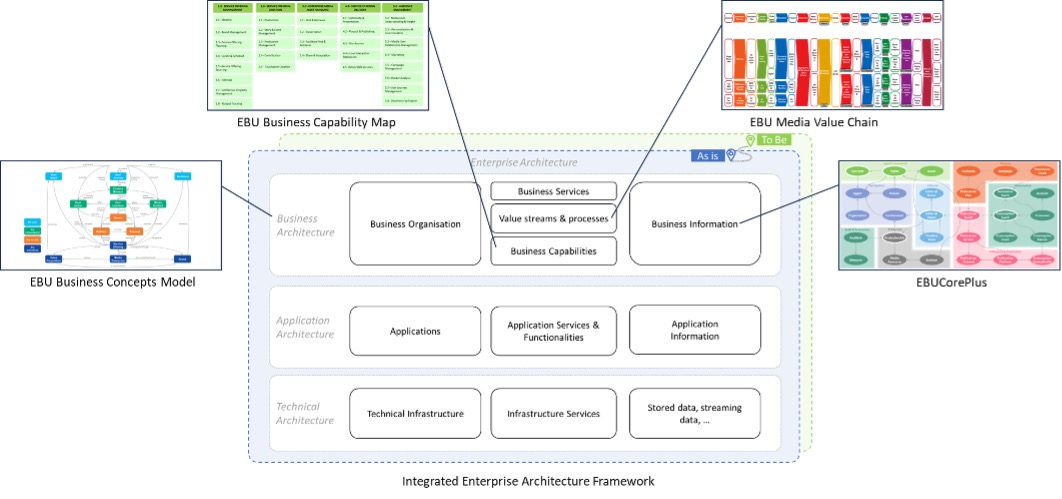
Management tools such as capability maps continue to be popularized by leading research organizations like Gartner, Forrester and Cutter. They are often created by business or technology architects in a company. But not all public service media organisations have dedicated enterprise architects. The goal of the Integrated Enterprise Architecture group is to deliver architectural concepts in a form that can be applied by all EBU Members.
The Integrated Enterprise Architecture group maintains and continues the work previously carried out by EBU's Capability Map group.
Goals
The Integrated Enterprise Architecture group develops and promotes the EBU's Business Capability Map. Its main priority is to ensure full alignment and compatibility of the map with EBU frameworks such as The Digital Media Value Chain (TR 041) and EBUCorePlus – for a comprehensive high-level architecture that covers both business and technology and facilitates resource prioritisation for the realization of an organization's strategic goals.
Value to EBU Members
An integrated enterprise architecture allows EBU Members to assess their ‘as-is’ state faster and more reliably, and to communicate their ‘to-be’ state more clearly. It also increases the efficiency and quality of strategic and transformational efforts by giving all stakeholders from management, business and technology a shared mental model and vocabulary.
The IEA group toolset for Integrated Enterprise Architecture provides:
- Integrated enterprise architecture using EBU artifacts
- Architecture models that are media industry specific
- Architecture knowledge and practice to all members
Deliverables
- Further development of the EBU Business Capability Map. The group is working on the second release of ‘The EBU Business Capability Map’ (BPN 126), which will extend the existing focus on media-specific capabilities to more-general enterprise capabilities that are needed by Public Service Media organisations.
- Introduce and establish a new a high level business architecture that brings together existing EBU artifacts including the EBU Business Capability Map (BPN 126), The Digital Media Value Chain' (TR 041v2), and the EBUCorePlus data model.
This is an example of how an integrated architecture framework might look and how existing EBU artifacts could provide industry specific reference models.

